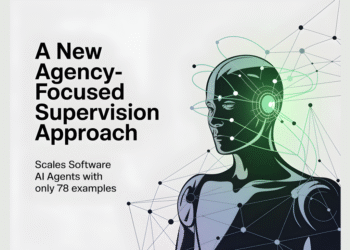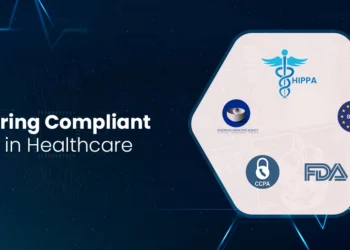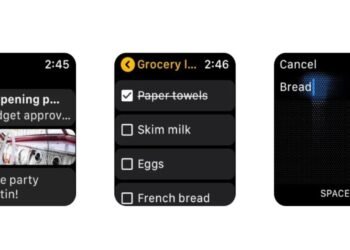AI and machine learning enable robots to autonomously perform tasks that once required human intervention. At the core of this transformation is data—the essential fuel for intelligent robotic systems. Robots rely on vast amounts of diverse, high-quality data to learn from their environments, recognize patterns, and refine their actions. By collecting and leveraging this data to train machine learning models, engineers equip robots with the ability to make informed decisions, adapt to dynamic conditions, and operate safely in real-world scenarios.
This article explores how data powers the advancement of robotics AI. By leveraging machine learning, computer vision, natural language processing, and other techniques, robots can learn from experience, adapt to new situations, and make informed, data-driven decisions. It also highlights how Cogito Tech ensures high-quality data for training AI algorithms for robotics applications.
Training data in robotics
Robots rely on artificial intelligence models trained on massive volumes of data, enabling them to learn from experience, perform tasks with greater autonomy, adapt to complex, dynamic environments, and make informed decisions. AI algorithms allow robots to continuously improve through data-driven learning. Multimodal datasets further enhance their capabilities—for example, computer vision enables them to ‘see,’ while natural language processing (NLP) allows them to understand voice commands, control smart devices, and respond to user queries in real time.
Data underpins every stage of robotics AI development, from initial training and simulation to integrating human feedback. This data-driven approach not only boosts performance and safety but also ensures that robotic systems remain aligned with human goals as they take on increasingly complex tasks.
Here are several ways in which training data drives the development and capabilities of robotics AI at every stage of learning and deployment.
Supervised learning and training datasets
In supervised learning, robots are trained on labeled datasets—for example, annotated image and video datasets are used for vision tasks to enable them to recognize objects, their properties, and location in a scene. For example, Amazon’s labeled ARMBench dataset from one of its warehouses is used to train a robotic arm to perform ‘pick-and-place’ operations. This enables the robot to navigate three key visual perception challenges— object segmentation, identification, and defect detection.
For example, in behavior cloning, a robot learns a skill by copying an expert, often a human. The robot observes a human’s movements to perform a task, which becomes the input for the training data. The human’s corresponding action at that moment is the label or ‘correct answer’. This enables the robot to learn complex behaviors without needing to figure out the steps on its own. AI-powered robots must be trained on a wide variety of training data—small or homogeneous datasets cause robots to fail in new situations. NVIDIA warns that imitation models need diverse examples to work well on unfamiliar tasks.
Simulation and synthetic data
Real-world data collection in robotics is a slow and cumbersome process. Simulation solves this by generating synthetic data in virtual environments that mimic real-world physics and visuals. Simulation can quickly produce huge amounts of labeled data—like object positions, movements, and collision details—without physical robots or equipment. It’s faster, cheaper, safer, and provides perfectly accurate labels, making it easier to train robots for many tasks and environments.
Simulation is often paired with domain randomization: Instead of showing the robot the same perfect, textbook example repeatedly, variables like textures, lighting, object shapes, or movement settings are changed at random. The robot learns to focus on what’s truly important, like the shape of an object. By training in simulation first, robots can learn safely and cost-effectively before being tested in the real world. This approach helps close the gap between virtual training and real-world performance in robot vision and control.
Demonstration and imitation learning
Robots learn skills by watching and copying a human trainer. This imitation learning involves collecting a complete path of actions while a human performs the task. This type of training is done either through teleoperation (where the human controls the robot remotely with a device), or kinesthetic teaching (where the human trainer physically guides the robot’s arm). The robot records the state-action pairs—what it senses in the environment and the exact action the trainer took at that moment. The program then uses this labeled data to learn a policy, or rule, to imitate the human’s actions in similar situations.
For example, a human operator can control a robot arm to pick up a cup and put it down while the robot records the exact positions of its joints and camera views. The robot then uses supervised learning to clone that behavior.
Reinforcement learning from human feedback
Reinforcement Learning from Human Feedback (RLHF) teaches LLM-powered robotics systems complex skills by aligning their actions with human preferences. The robot performs tasks, and a human expert ranks or compares different attempts (for example, scoring which video clip of a robot opening a drawer was better). An algorithm then uses these human preferences to develop a ‘Reward Model’ that automatically predicts what a human would prefer in similar situations. The robot then uses this reward model as guidance in standard Reinforcement Learning (trial-and-error), allowing it to acquire nuanced skills with relatively little human-labeled data, often enhanced by pre-training in simulation.
Robotics AI data challenges
AI-powered robots can perceive their surroundings, interact with humans, and make decisions in real-time. However, all this depends significantly on the quality of training data used to build their AI models. Obtaining such robotic training data presents several challenges, as follows:
- Insufficient domain-specific data: Training AI algorithms requires large volumes of quality data. In sensitive areas like healthcare, acquiring diverse, real-world data to train surgical robots is difficult due to privacy constraints, ethical concerns, and limited data availability.
- Diverse data format processing: Robotics AI relies on multiple sensors that generate a vast amount of multimodal data, such as text, images, video, audio, and signals. Data from different sensors (cameras, microphones, and GPS systems) are not inherently aligned. This makes sensor fusion—combining diverse raw data into one clear and reliable view of the robot’s environment—highly complex, requiring advanced processing techniques for accurate prediction and decision-making.
- Data annotation challenges: Robots require large, labeled multimodal datasets (images, LiDAR, audio, etc.). Limited or poorly labeled data leads to failures in real-world deployment due to issues like noisy inputs (bad lighting, sensor errors), bias in demonstrations, and the sim-to-real gap (when models trained in simulation perform poorly in real-world conditions).
How Cogito Tech ensures high-quality data for training AI algorithms in robotics
At Cogito Tech, we understand that building robotics AI that can adapt to diverse real-world tasks is challenging. Teams often face issues such as sensor noise, simulation-to-real gaps, and privacy concerns when handling sensitive robotic data. Each robotics project requires specialized datasets tailored to its unique tasks, and off-the-shelf data rarely meets these demands.
With over eight years of experience in AI training data and human-in-the-loop services, Cogito Tech delivers custom data solutions and model evaluation services that enable robots to master complex, manual-only tasks, like picking unknown objects or navigating unpredictable settings, with confidence.
Cogito Tech’s robotic data solutions include:
- Data Collection & annotation: We collect, curate, and annotate robotic sensor, control, vision, and tactile data to enhance perception, object recognition, and manipulation. Our action labeling maps human inputs to robot actions, improving dexterity, autonomy, and adaptability in real-world conditions.
- Real-time feedback: By monitoring robot performance in simulated environments, we provide immediate insights and continuous fine-tuning, ensuring seamless transitions from simulation to deployment.
- Teleoperation expertise: Through our Global Innovation Hubs, robotics engineers and industrial operators guide teleoperated robot learning using demonstration-based training, real-time corrections, and expert-driven haptic and visual feedback. Integrated with digital twin environments, this approach ensures precision, adaptability, and operational efficiency.
Conclusion
The future of robotics lies at the intersection of artificial intelligence and data. From supervised learning and simulation to imitation learning and reinforcement learning, every advancement in robotics AI is fueled by the quality and diversity of the data used to train it. Yet, challenges such as domain-specific data scarcity, sensor fusion complexity, and annotation hurdles remain critical barriers to progress.
By addressing these challenges head-on, Cogito Tech ensures that robots not only learn efficiently but also adapt seamlessly to real-world environments. Through custom data solutions, expert human-in-the-loop services, and advanced evaluation methods, Cogito Tech helps robotics teams to build AI systems that are safe, reliable, and capable of handling increasingly complex tasks.


















